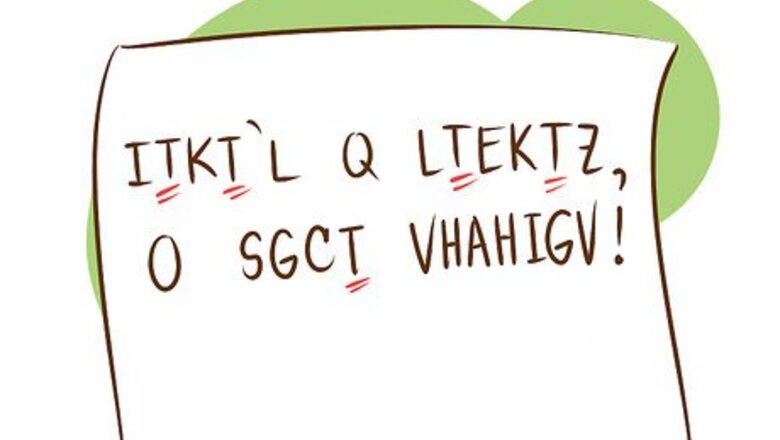
views
Solving Substitution Ciphers
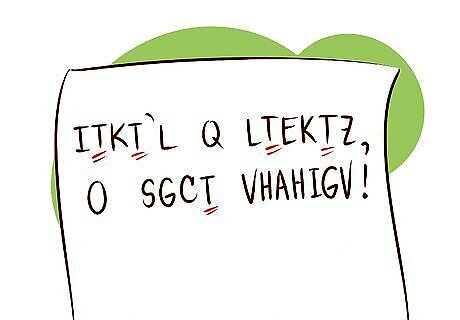
Start looking for single-letter words in the message. Most codes using a relatively simple substitution method are most easily cracked by doing a simple plug-and-chug, figuring out the letters one by one and patiently figuring out the code based on guesses. Single-letter words in English will be "I" or "a," so you should try to plug one in, looking for patterns, and--essentially--playing hangman. If you've got "a - -" solved, you know it would most regularly be "are" or "and." Guess and check. If it doesn't work, go back and try the other options. Be patient and go slowly. Don't worry as much about "cracking" the code as learning to read it. Looking for patterns and recognizing the rules in which English (or whatever language is being coded) is written will get you solving the code with some time and effort.
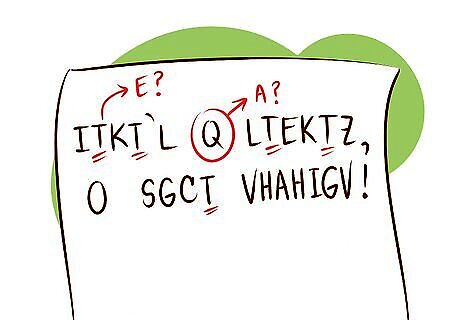
Look for the most frequent symbols or letters. The most common letter used in English is the letter "e," followed by "t" and "a". As you're working, use your familiarity with common words and sentence structure to start making logical guesses. You'll rarely feel sure, but the code-breaking game is played by making logical choices and going back and correcting your mistakes. Watch for double symbols and short words and start solving those first. It's easier to try to make an educated guess at "an" or "in" or "at" than "highway."
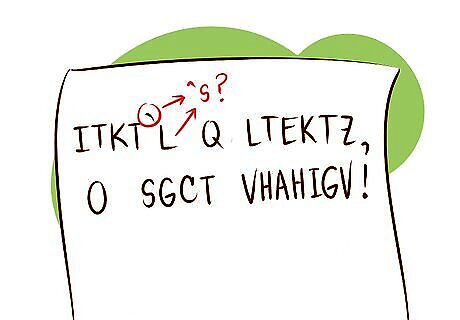
Look for letters after apostrophes. If the message includes punctuation, you're in luck. This offers a whole host of other hints that you can learn to recognize. Apostrophes will almost always be followed by S, T, D, M, LL, or RE,AR,BT. So, if you've got two identical symbols after an apostrophe, you've solved for "L" or "D".

try to determine what kind of code you have found. If, as you solve, you think you recognize one of the common code types from the above, you've cracked it and can stop your plugging-and-chugging and fill in the message based on your code. This probably won't happen often, but the more familiar you become with common codes the more likely it will be that you'll recognize the sort of code used and will be able to solve it. Number-substitutions and keyboard codes are especially common among basic everyday secret messages. Keep an eye out for those in particular and apply as you see fit.
Recognizing Common Codes
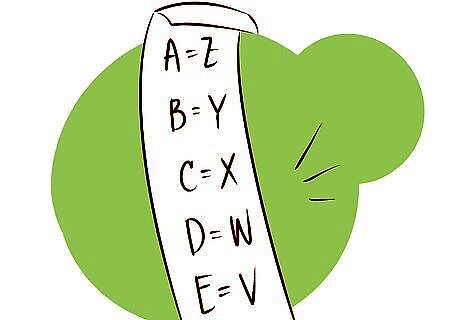
Learn to recognize substitution ciphers. Basically, a substitution cipher involves substituting one letter for another letter, according to some predetermined rule. This rule is the code, and learning and applying the rule is the way to "break" the code and read the message. Even if the code contains numbers, the Cyrillic alphabet, nonsense symbols, or hieroglyphics, as long as the type of symbol used is consistent, you're probably working with a substitution cipher, which means you need to learn the alphabet used and the rule applied to decipher the code.
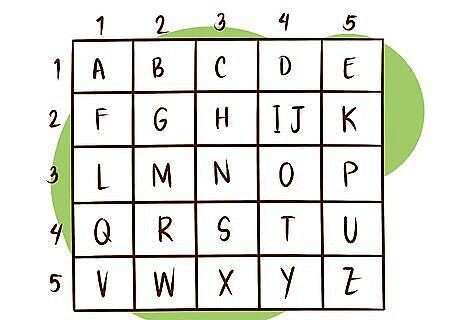
Learn the square cipher method. The earliest sort of cipher was used by the Greeks, and involved creating a grid of letters that corresponded to numbers, then using the numbers to create messages. It's a simple code to use, making it one of the foundations of modern code-cracking. If you've got a message that includes a long string of numbers, it might have been coded with this method. The most basic form of this code involved a row 1-5 and a column 1-5, and then filled the matrix in with each letter from left to right and down the grid (combining I and J into one space). Each letter in the code was represented by two numbers, the column on the left supplying the first digit, and the row on top supplying the second. To code the word "wikihow" using this method, you would get: 52242524233452 A simpler version of this often used by children involves writing in numbers that correspond directly to the letter's position in the alphabet. A = 1, B=2, etc.
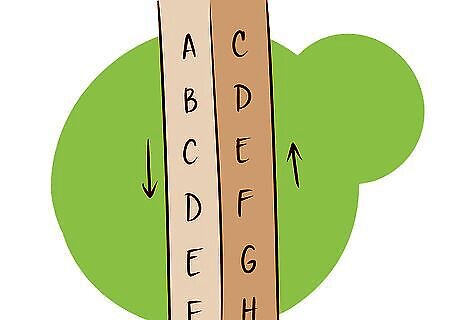
Learn the Caesar shift. Julius's Caesar Cipher, simple to use and understand, is a basic cryptography system that's studied at the start of cryptography. It involves shifting a letter at position X [e.g. A+X=B, B+X=C if X=1]. However it is easily crackable, as there are only 26 available shifts. In this shift method, you shift the entire alphabet a certain number of places in one direction. In other words, a shift of three spaces left would replace the letter A with D, B with E, etc. This is also the basic principle behind a common children's code called "ROT1" (meaning, "rotate one." In this code, all the letters are just shifted forward one position, making A represented by B, B represented by C, etc. Coding "wikihow" using a basic Cesar shift of three to the left would look like: zlnlkrz
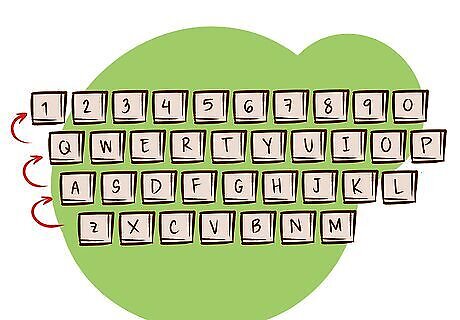
Keep an eye out for keyboard patterns. Keyboard substitutions use the pattern of a traditional American (QWERTY) keyboard pattern to use substitutions, generally by shifting the letters up, down, left or right by a certain number of places. By shifting letters in a particular direction on the keyboard, you can create simple codes. Knowing the directional shift allows you to crack the code. By shifting the columns up one position, you could code the word "wikihow" like this: "28i8y92"
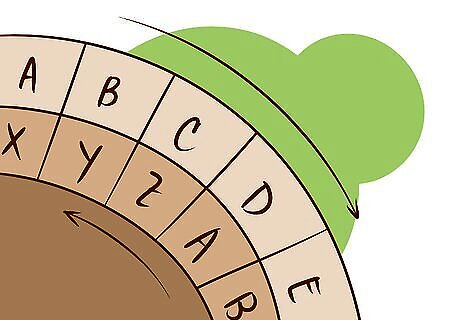
See if you've got a polyalphabetic cipher. In basic substitution ciphers, the writer of the code creates one alternate alphabet to create the coded message. Starting at some point after the Middle Ages, these kinds of codes became too easy to crack and cipher-writers began using various methods to use multiple alphabets within a single code, making the codes much more difficult to crack without knowing the method. Trimethius's tableau is a 26 x 26 grid of every permutation of Cesar's shifted alphabets, in alphabetical order, or sometimes presented as a rotating cylinder, or "tabula recta." There are various methods of using the grid as a code, including using the first row to code the first letter in the message, the second for the second, and so on. Coders will also use a code word to refer to specific columns for each letter of the enciphered message. In other words, if the code word was "wikihow" using this method, you would consult the "W" row and the column of the first letter in the enciphered code to determine the first letter of the message. These are tough to crack without knowing the code word.
Being a Codebreaker

Be patient. Breaking codes requires a tremendous amount of patience and perseverance. It's slow and tedious work, often frustrating because of the need to go back and guess again, trying different keys and words and methods. If you want to crack codes, learn to be calm and patient, embracing the mystery and the game.

Write your own codes. Doing the cryptogram in the paper is fun, but jumping headfirst into polyalphabetic codes without the aid of keywords is a whole other level entirely. Learning to write your own codes using complex coding systems is a great way of learning how code-writers think and learning to crack them. The best code-crackers are also good at writing their own and coming up with ever-more challenging ciphers. Challenge yourself to learn more complicated methods and how to crack them. Analyzing criminal codes and ciphers can be a good way of picking up some tricks of the trade. Bookmakers, drug kingpins, and the Zodiac killer have all developed incredibly complex codes worth looking into.

Try your hand at famous unsolved codes. As part of a fun public outreach, the FBI regularly publishes codes for the public to try to crack. Try them out and submit your answers. Who knows--you might have a job soon. Kryptos, a public statue outside the CIA headquarters, is perhaps the most famous unsolved code in the world. It was originally created as a test for agents, involving four separate panels with four distinct codes. It took ten years for the first analysts to crack three of the codes, but the final code remains unsolved.

Enjoy the challenge and the mystery. Cracking codes is like living in your own Dan Brown novel. Learn to embrace the mystery and the challenge of secret codes and the experience the thrill of unlocking the secret.



















Comments
0 comment